
Nereis is a genus of polychaete worms in the family Nereididae. It comprises many species, most of which are marine. Nereis possess setae and parapodia for locomotion and gas exchange. They may have two types of setae, which are found on the parapodia. Acicular setae provide support. Locomotor setae are for crawling, and are the bristles that are visible on the exterior of the Polychaeta. They are cylindrical in shape, found not only in sandy areas, and they are adapted to burrow. They often cling to seagrass (posidonia) or other grass on rocks and sometimes gather in large groups.

Aphrodita is a genus of marine polychaete worms found in the Mediterranean sea and the eastern and western Atlantic Ocean.
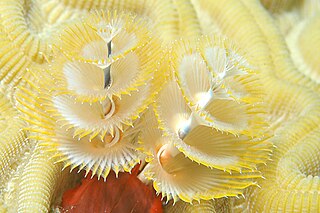
Spirobranchus is a small genus of tube-building annelid fanworms in the family Serpulidae.
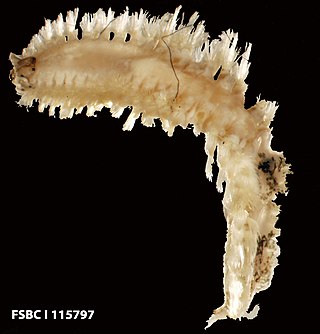
Harmothoe is a genus of marine Polychaete worms belonging to the family Polynoidae. Species of Harmothoe are found world-wide to depths of at least 5,000 m but are more common in shallower water.

Phyllodoce is a genus of polychaete worms, which contains about 200 species. The prostomium bears eyes, two pairs of antennae and a pair of large retractile nuchal organs. The eversible proboscis is clearly divided into two parts.

Cirratulidae is a family of marine polychaete worms. Members of the family are found worldwide, mostly living in mud or rock crevices. Most are deposit feeders, but some graze on algae or are suspension feeders.

Diopatra is a genus of polychaete worms in the family Onuphidae.
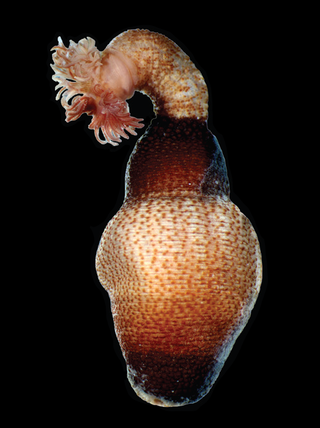
Antillesoma antillarum is the type species of the peanut worm genus Antillesoma. The genus belongs to the family Phascolosomatidae.

Amphinomidae, also known as the bristle worms or sea mice, are a family of marine polychaetes, many species of which bear chaetae mineralized with carbonate. The best-known amphinomids are the fireworms, which can cause great pain if their toxin-coated chaetae are touched or trodden on. Their relationship to other polychaete groups is somewhat poorly resolved.
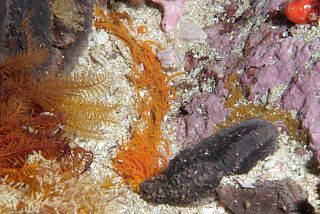
Cirriformia is a genus of marine polychaete worms in the family Cirratulidae.

Ceratonereis is a genus of polychaete worms from the family Nereididae.

Phyllodocidae is a family of polychaete worms. Worms in this family live on the seabed and may burrow under the sediment.

Lepidasthenia is a genus of marine Polychaete worms belonging to the family Polynoidae. Species of Lepidasthenia are found world-wide to depths of about 1200 m but are more common in shallower water.

Palola is a genus of polychaetes belonging to the family Eunicidae.
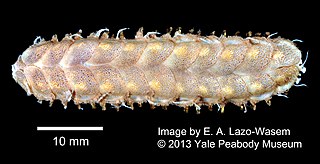
Lepidonotus is a genus of marine annelids in the family Polynoidae. The genus occurs globally and includes 80 species, usually found in shallow waters down to about 80 metres.

Maldanidae is a family of more than 200 species of marine polychaetes commonly known as bamboo worms or maldanid worms. They belong to the order Capitellida, in the phylum Annelida. They are most closely related to family Arenicolidae, and together form the clade Maldanomorpha.
Cirratulus is a genus of annelids belonging to the family Cirratulidae.
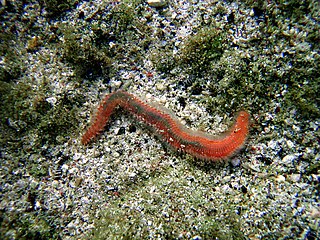
Eurythoe is a genus of polychaetes belonging to the family Amphinomidae.
Amphinome is a genus of polychaetes belonging to the family Amphinomidae.
















